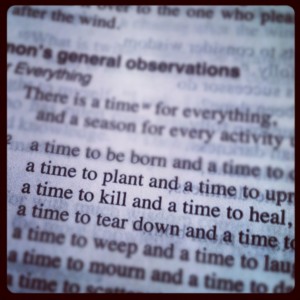A Time to Kill and a Time to Heal … {To Everything}
“Is she going to be okay, Mom?” my daughter whispered as we stood under the morning Iowa sun, while leaning against the calf pen. “She isn’t going to die, is she?”
Lydia, 10, looked at me with pooling eyes. On the other side of the pen, a weak and feverish calf groaned this long, aching moo. A veterinarian with a stethoscope checked the calf over.
I wrapped an arm around my daughter’s shoulder and pulled her close. “I think she’ll be fine, honey. I really do.” The vet drew back the plunger of a long needle, and then pushed it straight into the calf’s side. Lydia’s body tensed, and she covered her eyes. The calf shuffled. And in that single moment, the business of raising livestock got downright personal. I wiped away a tear from my cheek with the back of my hand.
It might seem foolish to cry over a sick calf. We are, after all, Iowa farmers. We raise animals in a land where livestock outnumber people by a wide margin. Eventually, this sick calf will die—probably not from illness or old age, but because it is part of a food-production industry. Nearly nine percent of the United States’ grain-fed beef comes from our state. If you ate a pork chop recently, there’s a one-in-four chance it came from Iowa.
Daily, we farmers witness how Ecclesiastes 3:3 unfolds in our own backyards: “… a time to kill and a time to heal.” There is, indeed, a time for everything, a season for every activity under heaven—and in Iowa.
—
Will you join me at The High Calling today for the rest of this story, the rest of this wrestling? There it sits in our Bibles, … “a time to kill.” I wrestled hard with this one. And I’d love to hear your thoughts in the comments about how you make sense of that one tiny, confounding powerful phrase.
Click here to get to The High Calling …



0 Comments